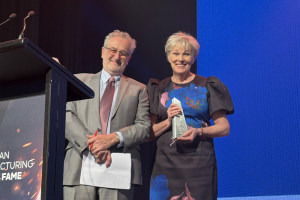Asparagopsis, or red seaweed, is a hot topic now due to its ability to cut methane emissions from cattle. Marine scientists at CQUniversity’s Coastal Marine Ecosystems Research Centre (CMERC) are researching a variety that grows in warm waters and may also help prevent coral bleaching.
Seaweed farming is not new, but the emissions reducing capabilities of the red seaweed Asparagopsis has grabbed the attention of the agricultural and science sectors in recent years.
At CMERC, researchers are investigating how farming the wild product adjacent to coral reef systems could also be beneficial, by improving water quality, contributing to maintaining the health of the reef.
The team is excited about the commercial and environmental opportunities, with PhD researcher Emma Theobald saying there were “huge opportunities” for Australia to capitalise on the emerging industry.
“Queensland has two species of this red seaweed, with one (Asparagopsis taxiformis) suited to warm water and the focus of my project.
“My project is around the reproduction of the seaweed, so I’m looking at what conditions best suits the species – temperature, light and nutrients – to maximise its productivity,” Theobald said.
It’s not without its challenges, because the seaweed has a three-part life stage. Theobald said she’s hoping to successfully trigger the spore production and develop techniques to grow the next life stage to a point where it can be transferred to the ocean for further growth.
Because Asparagopsis takes up nutrients quickly, farming the seaweed near the coastline could help prevent coral bleaching and protect the reef after heavy rainfall, Theobald said.
According to CMERC’s Seaweed lead, Dr Manoj Kumar, understanding what triggers the reproduction in Asparagopsis is crucial not only to managing its life cycle, but ensuring consistent spore supply for seeding regardless of season.
“This project is of high importance for finding solutions to upscale biomass production in both land and ocean farming environments.
“By gaining insights into the reproductive mechanisms, researchers can initiate breeding efforts, refine protoplast isolation for efficient biomass generation, and employ genetic engineering methodologies to develop Asparagopsis varieties with desired traits, contributing to the sustainable growth and application of this valuable marine resource,” Kumar said.
Meanwhile, CMERC’s PhD researcher Najeen Rula is looking at developing sustainable ways of harvesting the seaweed so its commercial potential can be realised.
Rula said, “I’m currently conducting field observations and modelling to study its distribution and growth patterns, and field experiments to determine the effects of harvesting on its growth and reproduction.
“Part of my study will also look at the potential of harvesting as a means to prevent seaweed overgrowth in corals or artificial substrates such as wharves or pontoons.”
CMERC’s red seaweed projects have been sponsored by the Australian Seaweed Institute and FutureFeed.






